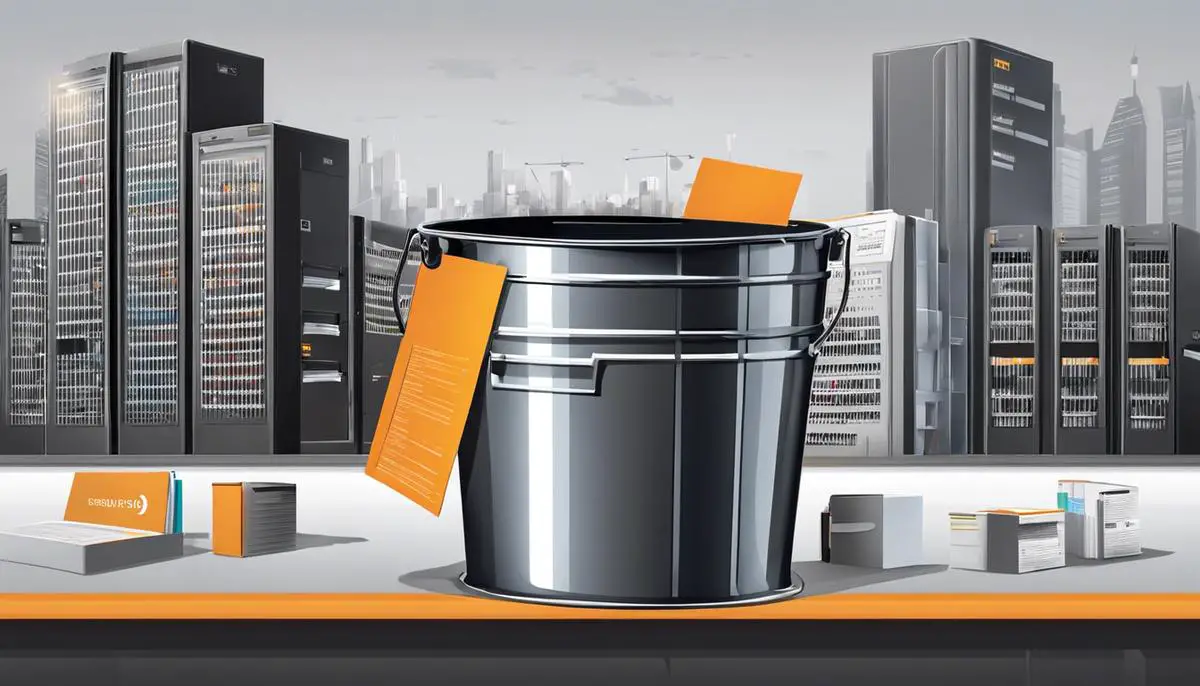Navigating the vast array of services provided by Amazon Web Services (AWS) can seem daunting at first glance. However, mastering the AWS Command Line Interface (CLI) can unlock a powerful and efficient way to manage these resources. A fundamental skill for any AWS user is the ability to interact with Amazon Simple Storage Service (S3), one of the most popular AWS offerings. In this essay, we’ll begin by exploring the essential steps required to install the AWS CLI—a prerequisite for harnessing the command line to manipulate cloud resources. We will then delve into configuring the CLI with your credentials, an important step for establishing a secure connection with the AWS ecosystem. Armed with this knowledge, we pivot to focus on the ‘aws s3 ls’ command, an indispensable tool for listing the contents of S3 buckets with finesse and precision. Let’s embark on this educational journey to demystify the CLI and enhance our command of cloud storage.
Installing AWS CLI
Power Up Your Productivity: Installing AWS CLI
As tech enthusiasts, we crave efficiency. Why click through a GUI when a command line can execute tasks in a fraction of the time? If you’re looking to streamline your interactions with Amazon Web Services, installing the AWS Command Line Interface (CLI) on your machine is a robust solution. Let’s cut to the chase and get you set up.
Step 1: Check Your Prerequisites
Before diving into the installation, ensure that your machine has Python 2 version 2.7 or later, or Python 3 version 3.6 or later installed. The AWS CLI is Python-based, and you’ll need it to run the program.
Step 2: Install AWS CLI
You have two primary options for installing the AWS CLI: pip (Python’s package installer) or a bundled installer provided by AWS. Here are the commands for both methods.
Using pip (Recommended for Python Users)
If you’ve already got pip installed, open your command prompt or terminal and run:
pip install awscli --upgrade --user
This command installs the AWS CLI for the local user and ensures you have the latest version.
Using the Bundled Installer (Alternative Method)
- Download the AWS CLI Bundled Installer using ‘curl’:
- Run the downloaded installer:
curl "https://awscli.amazonaws.com/AWSCLIV2.pkg" -o "AWSCLIV2.pkg"
sudo installer -pkg AWSCLIV2.pkg -target /
This will install the AWS CLI for all users on your system.
Step 3: Verify the Installation
After installation, confirm that the AWS CLI is installed correctly by running:
aws --version
The system should return the version number of the AWS CLI installed on your machine.
Step 4: Configuration
Once installed, set up the AWS CLI with your credentials. Run:
aws configure
Enter your AWS Access Key ID, Secret Access Key, region, and output preferences when prompted. These details are essential for connecting the CLI to your AWS account.
Step 5: Start Using AWS CLI
With the AWS CLI installed and configured, you’re ready to interact with AWS services directly from your terminal. Deploy services, manage resources, and automate your workflow with streamlined commands.
Remember, the real power of technology resides not in owning the latest gear but in mastering the tools that drive progress. The AWS CLI is one such tool, sharpening the cutting edge of your professional toolkit.
And now, it’s time to explore the vast possibilities at your fingertips—experiment, automate, optimize, and revolutionize the way you work with AWS.

AWS Configuration
Configuring the AWS CLI With Your Credentials: A Step-by-Step Guide
So, your AWS CLI is installed and ready to flex its muscles. The next crucial step is setting it up with your credentials. This is where the real action begins, opening a world where managing AWS services is as simple as typing a few commands. Let’s dive into the configuration process without any dilly-dallying.
Step 1: Generate Your Access Keys
Before we can even think about configuration, you’ll need to generate access keys from the AWS Management Console. Log into your AWS account, navigate to the IAM (Identity and Access Management) section, and create a new user or select an existing one. Ensure that the ‘Programmatic access’ option is enabled for the AWS CLI to interact with your AWS services.
Once the user is all set, generate the access and secret keys. Remember, the secret key is shown only once, so store it somewhere safe and treat it like your toothbrush – don’t let anyone else use it!
Step 2: Run AWS Configure
Open your command line or terminal. Enter the command aws configure and press Enter. The AWS CLI will courteously prompt you for four pieces of information:
- AWS Access Key ID [None]: Enter the access key ID you obtained from the IAM console.
- AWS Secret Access Key [None]: Here comes the secret access key. Enter it but check twice before you hit Enter – accuracy is key.
- Default region name [None]: Type in the AWS region code you want to work with by default, like ‘us-west-2’. It’s all about location, location, location.
- Default output format [None]: The output format determines how the results are displayed. Choose from ‘json’, ‘yaml’, ‘text’, or ‘table’. ‘json’ is the preferred option for its versatility, so go with that unless you have a distinct preference.
Step 3: Confirm Your Configuration
Your credentials are now stored in a config file at ~/.aws/credentials, and a configuration file at ~/.aws/config. To double-check that they’re snug and comfortable, run aws s3 ls or another simple command to list some resources. If everything is configured correctly, you should see your S3 buckets listed without an error.
Step 4: Embrace Profiles for Multiple Accounts
Do you juggle multiple AWS accounts? Fear not! Use profiles to switch between them like a pro. When you run aws configure --profile user2, you’re creating a new set of credentials specifically for ‘user2’. To use this profile, add --profile user2 to your AWS CLI commands, or export it as an environment variable using export AWS_PROFILE=user2.
Tips for the Security-Conscious:
- Regularly rotate your credentials. An ounce of prevention is worth a gigabyte of cure.
- Use IAM roles where possible, especially when working with AWS services from within AWS resources like EC2 instances.
That’s it. You’ve configured AWS CLI with your credentials. Go ahead and automate to your heart’s content, and let the power of the command line streamline your AWS management. Enjoy the productivity boost and don’t look back. Welcome to a new horizon of cloud computing efficiency.

Using ‘aws s3 ls’ Command
Diving into the utilization of the AWS Command Line Interface (CLI), a streamliner for manual tasks and a boon for developers, let’s delve into listing contents of an S3 bucket — an action as rudimentary as it is pivotal.
To list the contents of your S3 bucket, you’ll need to employ the ls command, a direct parallel from UNIX-derived systems that stands for “list.” In the context of AWS S3, ls operates to display the objects within a bucket, and with the right flags and parameters, offers a potent tool for navigating your stored data.
The syntax for this operation is as follows:
aws s3 ls s3://your-bucket-name --recursive --human-readable --summarize
Let’s dissect this with precision:
aws s3 ls: This is the command that initiates the listing of S3 contents.s3://your-bucket-name: Replaceyour-bucket-namewith the actual name of your bucket. Thes3://prefix is obligatory when referencing S3 resources.--recursive: By default,aws s3 lswill only list items (objects and sub-directories) in the root of the specified bucket. To list all objects within the bucket and its directories, the--recursiveflag must be included.--human-readable: When dealing with object sizes, readability is valuable. This flag formats file sizes in a human-readable format (e.g., KB, MB, GB).--summarize: When the operation concludes, this flag presents a summary of the bucket contents — providing total object count and combined size, two pieces of data critical to inventory assessment.
For those dealing with extensive S3 occupations, further granularity may be required. Combine the --include and --exclude parameters to fine-tune your listings to include or exclude specified patterns, thus filtering the results to match specific needs.
Remember, in deploying these commands, ensure you have the necessary permissions. Without the right IAM policies and settings, AWS won’t hesitate to block your attempts with an emphatic access denied message.
As with all command line operations, mastery comes with practice and variation. Innovate with different flags, mix commands, pipe outputs, and always remember — efficiency isn’t about just doing things faster; it’s about doing things smarter. With AWS CLI, the savvy tech enthusiast transforms tedious manual bucket explorations into a swift keystroke dance. And with that keystroke dance, your command over AWS S3 becomes near boundless.

Embarking on the journey to understand and utilize the AWS Command Line Interface equips individuals with valuable skills to efficiently manage cloud resources. As we’ve seen, installing the AWS CLI sets the stage for seamless interaction with various AWS services. Proper configuration, including the setup of access credentials and preferences, forms the backbone of a secure and personalized CLI experience. By becoming adept with the ‘aws s3 ls’ command, users empower themselves to deftly navigate the depths of S3 buckets, simplifying cloud storage operations. The knowledge and practical insights gained through this exploration serve as a testament to the powerful capabilities that come with mastering the command line in the cloud computing realm.
Writio: Your AI content writer for websites and blogs. This article was brilliantly crafted by Writio.